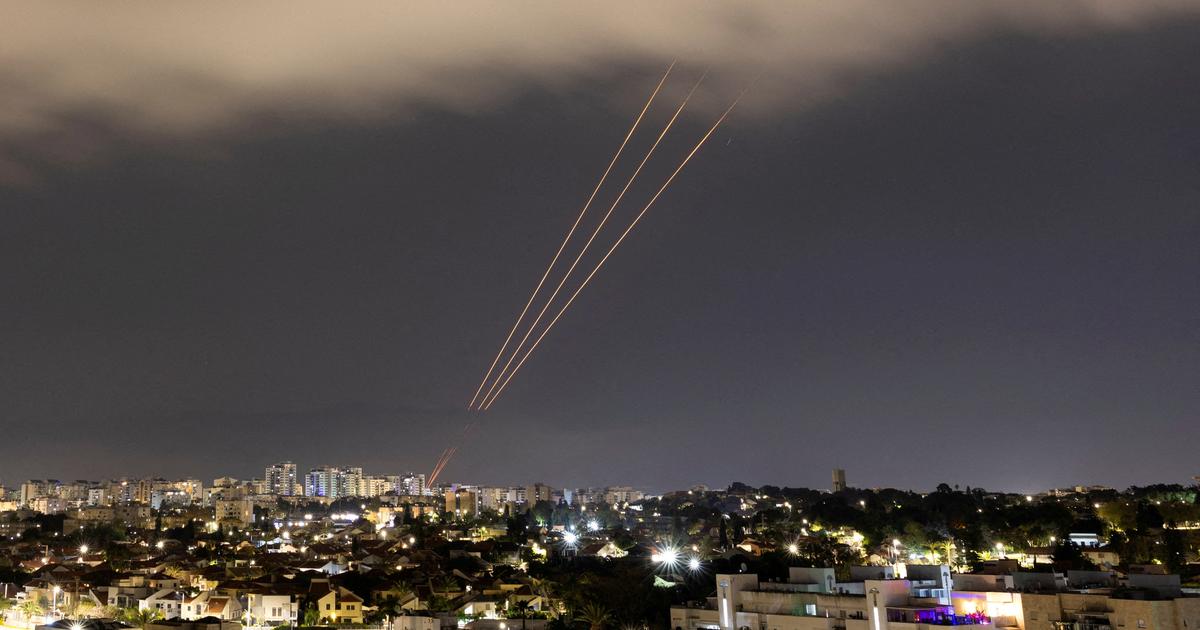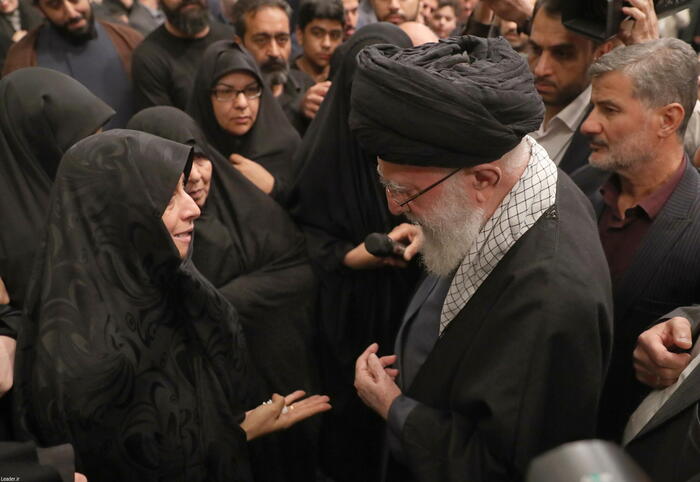They yelled "Death for America", "Yankee go home" and burned stars and stripes. As for weeks, hundreds of students gathered in the early morning of November 4, 1979 in light rain in front of the US Embassy in Tehran. The protest ritual the employees were already used to. But at about 11.30 am, many of the students suddenly climbed over the wall of the embassy grounds at the same time.
"They also came through the gates and then into the buildings," said Kevin J. Hermening of the US Marine Corps. The intruders "certainly counted on being shot at by us and dying," recalled the guard, then 21, in the one-day post. But the guards were under the Ministry of Foreign Affairs and had no order to fire. For Hermening and his compatriots 444 terrible days began as hostages of the mullah regime.
Earlier this year, Mohammad Reza had been forced to flee Pahlavi as the Shah of Persia - a vivacious, arrogant ruler who, with US support, long ruled from the "peacock throne" and brutally suppressed the opposition. Together, Islamic and nationalist, liberal and communist groups expelled the despot. With his return from exile in Paris, Ayatollah Ruhollah Khomeini took power on 1 February 1979 and called out the Islamic Republic two months later.
Carter's Nightmare: Every morning, a hostage is shot
Khomeini enforced the "theocracy" by all means. From then on he arrested, tortured and killed opposition activists. An authoritarian police state transformed Iran into a Shiite mullah dictatorship after a few months of awakening and hope. It was the execution of the initially widespread revolution and the beginning of a new tyranny, which Iranians still suffer from today.
An external enemy was just right for Khomeini to consolidate his still fragile power. He encouraged the "dear students" to support him in the fight for the extradition of the "criminal Shah".
photo gallery
24 pictures
Hostage taking in Iran 1979: How Iranian students embarrassed the USPromptly the message was stormed. "My God, that can mean war," scared Washington's Hamilton Jordan when he received the message from Tehran. The Presidential Adviser reached his boss at Camp David's estate and tore Jimmy Carter into a nightmarish vision: "I saw the revolutionaries shoot a hostage every morning at sunrise until we delivered the Shah," the US president later explained.
No hostages were shot and no war came. But the drama, which began 40 years ago, brought Jimmy Carter a devastating defeat in the 1980 election and shook the self-confidence of the superpower in the long term USA.
The United States Against Iran - In this asymmetric conflict, the world's leading economic power has been unable to bring a chaotic developing country to its knees. It was not primarily about geopolitics, reserves of raw materials or sales markets, but about the extradition of the deprived ruler against the release of a few dozen diplomats.
"In crises we stand behind the president"
The embassy staff were tormented, humiliated, dragged blindfolded and publicly presented. The Tehran Ministry of Foreign Affairs justified the occupation as "the natural response of the oppressed Iranian people to the US government's violation of this people's hurt feelings". Iran's official government was powerless anyway, and Prime Minister Mehdi Basargan resigned in protest on the day of the occupation.
What happened, determined the mullahs - probably without concept. "We have often run things without first knowing what the consequences would be," Khomeini said on television, "but Allah has always arranged everything in the best way."
President Carter assured diplomatically that America wanted a peaceful solution. The US mobilized the UN Security Council, which called for the immediate release of the hostages. The government canceled $ 300 million worth of spare parts for the Iranian army and avoided remarks that could have been interpreted as a provocation in Iran. Carter also suggested that Ayatollah rejected the specially dispatched negotiator Ramsey Clark - critic of the Shah regime - as well as attempts to mediate by Yasser Arafat's PLO.
Video from SPIEGEL TV: The drama in the US Embassy
AP
It was not until the mood became more and more tense that Carter sent out of a total of 60,000 Iranian students in the United States 4000 who were in the country with invalid papers or no visas. US banks froze the Iranian billion deposited there. The government stopped oil imports from Iran, the aircraft carrier "Midway" broke out with a convoy of war and supply ships in the northern Indian Ocean.
Now the Democrat Jimmy Carter received for the first time since taking office in 1976 encouragement from all sides. "We will show the world that we are behind our president in such a crisis," even his Republican rivals Robert Dole and Jim Connally declared hopes for the presidency.
"Operation Eagleclaw" failed in the desert storm
Such support is usually experienced by US presidents in major crises. In 1917, the Americans followed Woodrow Wilson when he declared war against Germany. Franklin D. Roosevelt chose her for the third time in 1940 as the first president of history in the White House and came under his leadership to the war alliance against Hitler Germany, Italy and Japan. In 1950, 81 percent of Americans supported Harry S. Truman's decision to intervene in the Korean War under the UN flag. And even the involvement in the Vietnam War meant 88 out of 100 senators initially good and left Lyndon B. Johnson far-reaching powers.
However, the jungle war in Vietnam dragged on for many years and ended up as a traumatic disaster for the US. In the Tehran hostage affair, the powerlessness of the world power was revealed within weeks. "America hero hostage" was the headline of the evening Newsshow on TV channel ABC; then the moderator named the number of days of hostage taking: "Day 50, day 51 ..."
Were there really no options? A military committee of officers and intelligence experts had swiftly drawn up an action plan - naval blockade against Iran, occupation of oil stores, bombardment of refineries. Carter, however, feared that it would endanger the lives of the hostages. A liberation was planned and presented to the then Israeli Defense Minister Eser Weizman. He considered a successful rescue operation in Tehran to be hopeless.
In desperation, Jimmy Carter tried it anyway. On the night of April 25, 1980 aircraft and helicopters launched by the aircraft carrier "Nimitz" landed in the Iranian desert. With the "operation eagle claw" leather neck to several hundred kilometers away Tehran and push out the hostages. The madness company was called off when machines collided in the sandstorm and eight US soldiers died. Carter's chances of re-election fell to zero.
"They held us the weapons in the neck and squeezed off"
After the failed action, the Iranians distributed their hostages across the country. Marine Hermening was shipped near the Afghan border. Shooter shootings were one of the worst experiences of his ordeal: "One of the guards shouted at Farsi's execution orders, and then they held us in the neck and squeezed the guns, there were no bullets in the guns, but we did not know that."
An end to the hostage drama hinted when the cancer-stricken Shah died following an odyssey through several countries on 27 July 1980 in Egypt. This accounted for the demand for extradition of the hated despot. And on 22 September, a conflict began that devastated America had nothing to do: Iraq launched massive air attacks on Iranian airports, the war was to take eight years and claim millions of victims.
In addition, the political weather conditions had changed: From the end of December 1979, Soviet troops occupied Afghanistan; Western politicians tried to make it clear to the mullahs that their real enemy was in the neighboring country, not in America 15,000 kilometers away.
A key figure among the solution seekers was the German Ambassador in Tehran. Gerhard Ritzel had already begun his post at Shah times, but built up intensive contacts with the persecuted opposition. He also knew Sadegh Tabatabai, who had a doctorate at the Ruhr University Bochum and was now State Secretary; Tabatabai's sister was married to a son of Ayatollah.
Ritzel obtained that a delegation of the International Red Cross was allowed to visit the hostages. Later, he arranged secret negotiations between Tabatabai and Warren Christopher, Deputy Secretary of State of the United States, in the guest house of the Federal Government on Bonn's Venusberg.
The Iranians now considered their hostages as a burden, but feared after the release of a military punitive action of the humiliated Americans. They also wanted $ 12 billion worth of assets left that Carter had frozen with US banks. A solution was found: no bombs on Tehran and the oil industry, with the release of Iranian billion - the current Carter government agreed.
After 444 days, the 52 hostages were flown out on January 20, 1981. In Wiesbaden Jimmy Carter received them. As an envoy of his successor. Because it was the day the new President Ronald Reagan took office.











